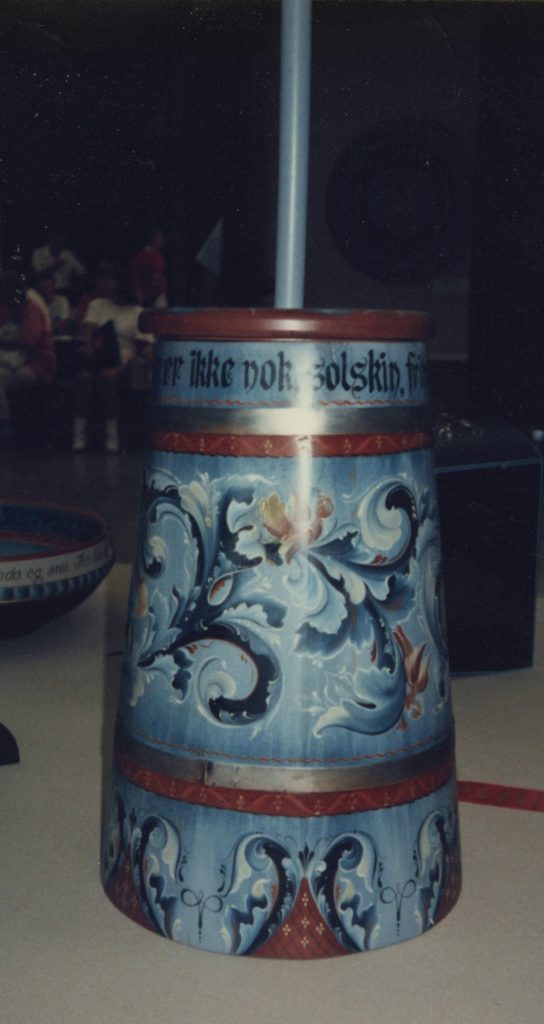- Life Dates Born 1946, Milwaukee, Wisconsin
- Occupation Rosemaling teacher/Homemaker
- Residence at Time of Award Seymour, Wisconsin
Pam Rucinski
Gold Medal In: Rosemaling, 1995
Ribbons
- 1991 Red ribbon for a butter churn
- 1994 Blue ribbon for a plate
- 1995 Blue ribbon for an oval box (tine)
Artist Statement
For as long as I can remember, I have always loved to create any kind of art. After I saw rosemaling demonstrated, I started taking classes at the Technical College. Right about the same time I started dating my future husband, so he always knew what he was getting into!
I entered my first show in Stoughton, Wis., with the encouragement of my first rosemaling teacher. After marriage, I moved to Seymour, Wis., and took classes at the Technical College in Green Bay where I also taught. I also became a charter member of the Green Bay Rosemaling Club. While my four children were small I did just enough rosemaling to keep my hand in. As they grew, my husband, a high school teacher, would either stay home with them or we all went camping while I took classes in either Milwaukee or Stoughton. I was interested in the Hallingdal style but no one locally was teaching it, so I used my show critiques as a learning tool. I took one of Judy Ritger’s Gudbrandsdal classes to improve my linework, not knowing what I was getting into–the designs and elegance left me speechless!
When I was finally able to attend classes in Decorah, I started with a Gudbrandsdal class. Ragnvald Froysadal became one of my most influential teachers. I still hear him in my head when I paint. Since that first class in Decorah I have returned many times and studied with most of the Norwegian teachers, as well as most of the American Gold Medalists. As a result, I paint most styles, although my favorites are still Hallingdal, Gudbrandsdal, Rococo, and Valdres. Along the way I also began painting Swedish Dala and Russian Zhostovo.
My ancestry is not Norwegian but Polish-German, so my roaming-all-over-the-globe Folk Art interests are fitting. One of the things I have learned from my travels and cross-cultural friendships is that folk art has no cultural or time-line boundaries. All people in every age have always looked for ways to beautify their surroundings and everyday tools. I once found a simple rosemaling border on a Hohokam pottery bowl in a museum in Arizona! Thousands of years, an ocean apart and yet their artistic ideas are linked. It was an eye-opening moment in my appreciation of the place folk art has in the human heart! Rosemaling and teaching it, whether it be at the local Tech College, anywhere in the United States, or Japan, helps me feel this human connection to artisans everywhere who seek beauty and fulfillment in their work. The people and friendships I have made as a result of this have enriched me, and my family, beyond measure.
2015

